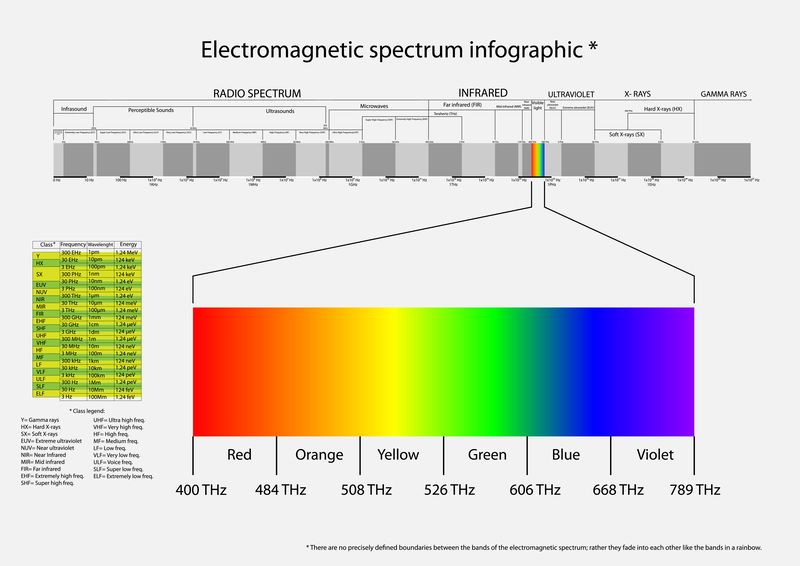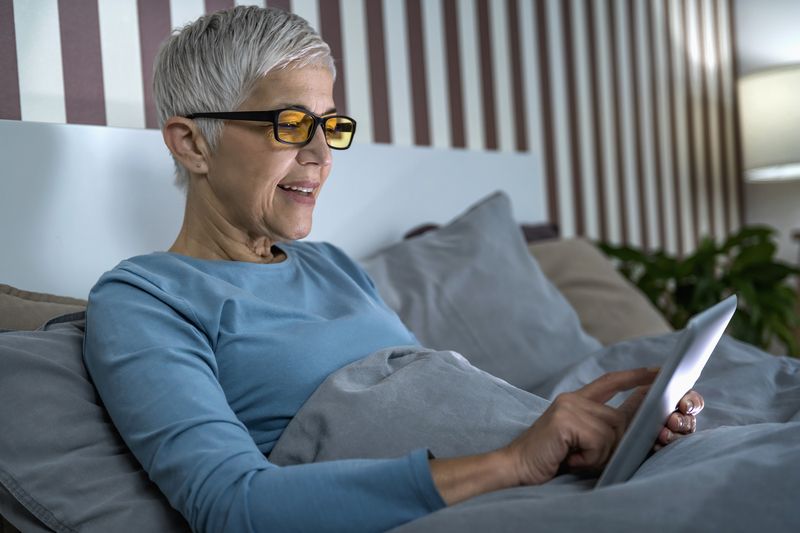Is Blue Light Blocking Enough? Here's How to Reverse the Effects


After a long day looking at various digital devices, most people have experienced discomforts such as eye dryness and eye strain. You might even find it hard to fall asleep, or maybe you even suffer from fatigue with headache.
If this is a problem that you have encountered in your daily life, then you are almost certainly dealing with the adverse effects of blue light and might need to find a way to do proper blue light blocking and reverse its effects.
You are not alone, though as the current stats are alarming. The average person has almost seven hours of screen time a day. Without an effective way to neutralize or block blue light, that amount of blue light exposure is sure to have a negative effect on your sleep-wake cycle as well as your eye health.
What Is Blue Light?
During the course of a day, sunlight changes wavelengths. Some of them are visible and some are not. This is called electromagnetic spectrum. Different wavelengths of light have different colors, and our bodies have evolved to treat these different colors of light as cues for various processes in the body.

Blue light belongs to the visible light spectrum, and it is most prevalent in nature during the middle part of the day. This is the type of light which triggers hormones that keep us awake and active, and improves our attention and alertness. So, why would you want to work on blue light blocking if it works so well for you?
The answer is simple – you can have too much of a good thing.
Apart from natural blue light from sunshine, nowadays you also get a significant amount of blue light from the various devices you use, such as computer screens, smart phones, and tablets. These devices often have the wavelength of 435 to 440 nm. This can have many disruptive effects on your health. That is why proper blue light blocking is essential.
What Are the Effects of Blue Light?
Blue light has the highest energy of all the colors in the visible light spectrum. When you get too much of it, especially late in the day or at night when the body should be winding down for sleep, it can actually be harmful.
Whereas red light signals to your brain that it’s time to go to sleep, blue light signals that it’s time to wake up. When this light comes from devices after sundown, that can seriously disrupt your natural sleep-wake cycle called the Circadian rhythm. This is because blue light suppresses the secretion of melatonin – the sleep hormone.
But blue blocking isn’t essential just so you can preserve healthy sleep patterns. Melatonin regulates your hormone health. That is why an irregular Circadian rhythm can have more far-reaching consequences and cause an overall hormonal imbalance.
A group or researchers published an article in the Molecular Vision, a scientific journal about biology and genetics in vision research, titled Effects of blue light on the circadian system and eye physiology. They have also established that there is a link between blue light exposure and eye damage, although they advise for a more thorough research on long-term effects.
The effects of excessive blue light on the eyes usually manifest as eye fatigue, feelings of strain, blurry vision, and eye dryness. When blue light is not adequately neutralized, this can lead to potential long-term eyesight problems.
Best Blue Light Blocking Methods
If you find yourself suffering from the negative effects of too much blue light, you might want to explore ways you can reduce blue light exposure or neutralize the effects of the light. Here are some blue light blocking methods you can try.
Minimizing Exposure
Researchers from the Netherlands Institute of Neuroscience, the Amsterdam UMC and the Dutch National Institute for Public Health and the Environment investigated how too much screen time affected the sleeping patterns of teenagers. They found that teens who had more screen time during the day also had later onset sleep-wake cycle. The scientists also discovered that, by limiting that exposure, they were able to reverse the negative effects of blue light after just one week.
Reducing screen time is not always possible. For a lot of people, looking at the computer screen for hours every day is a part of their job. However, what you can try is to avoid using your phone, tablet, computer or TV at least an hour before bedtime, and preferably two.
This will allow your brain to start secreting melatonin, the hormone which makes you drowsy, just in time to ensure a restful night of uninterrupted sleep. On the other hand, near-infrared and red light regulate melatonin production.
Blue Light Blocking Glasses
A study done on rats has shown that blue light from phones actually causes chronic retinal damage both in the retinal tissue and in its function.
One solution to this problem are blue light blocking glasses. A lot of people who wear prescription glasses are already familiar with blue light lenses – lenses that filter blue light. These lenses usually have a yellow tint – this is because that tint is meant to absorb the blue wavelengths of light.

Out of all the types of blue light blocking glasses, the ones that have obviously yellow or orange tinted lenses are considered the most effective. There are clear glasses which serve the same function too, but they may not be as effective.
Near-infrared and Red Light Therapy
Near infrare and red light therapy is not about blue light blocking, but about elimination of the negative effects that already occured.
This is because red light, just like blue light, is a natural trigger for certain processes in your body. While blue light is the cue that wakes you up and makes you more alert, red light is a signal for the brain and body to wind down and prepare for sleep.
Light from the visible red spectrum and the invisible near-infrared spectrum signals to the part of the brain, called the suprachiasmatic nucleus that its time to start releasing melatonin into the blood. That triggers feelings of calm and sleepiness.
A study published in Scientific Reports also shows that daily exposure to red light stimulates the mitochondria in human retinal cells. This helps improve declining vision and signs of macular degeneration.
The Advantages of Red Light Therapy for Blue Light Blocking
Red light therapy treatments are a simple and effective way to deal with the adverse effects of blue light.
Red light devices like FlexBeam are powerful and easy to use, not to mention flexible and portable, so you can adjust your treatments to your own needs and any circumstances. They also allow you to do the treatments daily, in the comfort of your own home, and enjoy the benefits of near-infrared and red light therapy without the need to leave home and go to a doctor’s office.
Red light therapy, even when administered every day, has no negative side effects. It doesn’t burn or increase your chances of getting skin cancer.
The one side effect you can expect if you decide to try red light therapy for blue light blocking is that not only will you neutralize the effects of blue light, you will also likely experience other benefits of red light therapy, such as better skin, higher energy levels, and faster healing.
References
- Moyano DB, Sola Y, González-Lezcano RA. Blue-Light Levels Emitted from Portable Electronic Devices Compared to Sunlight. Energies. 2020; 13(16):4276. https://doi.org/10.3390/en13164276
- Howarth J. Alarming Average Screen Time Statistics (2023). Exploding Topics. Published January 13, 2023. https://explodingtopics.com/blog/screen-time-stats
- Tosini G, Ferguson I, Tsubota K. Effects of blue light on the circadian system and eye physiology. Mol Vis. 2016;22:61-72. Published 2016 Jan 24. https://www.ncbi.nlm.nih.gov/pmc/articles/PMC4734149/
- Li H, Zhang M, Wang D, et al. Blue Light from Cell Phones Can Cause Chronic Retinal Light Injury: The Evidence from a Clinical Observational Study and a SD Rat Model. BioMed Research International. 2021;2021:e3236892. doi:https://doi.org/10.1155/2021/3236892
- UCL. Morning exposure to deep red light improves declining eyesight. UCL News. Published November 24, 2021. https://www.ucl.ac.uk/news/2021/nov/morning-exposure-deep-red-light-improves-declining-eyesight
